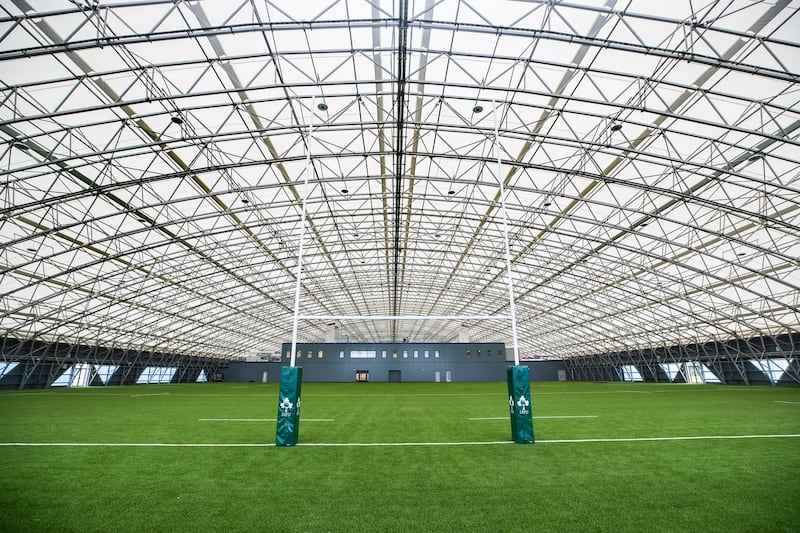Phase two of the National Indoor Arena, opened on Friday by An Taoiseach Leo Vradkar may turn out to be phase one of Irish Rugby’s shift into a higher gear.
Too late for this year’s World Cup for a fully comprehensive move from their base in Carton House, the IRFU have committed to relocating a key part of their infrastructure to the ever expanding Sports Campus Ireland in west Dublin.
The Irish Sevens teams are already using the facilities and Joe Schmidt’s World Cup squad will train in the bespoke new home in July for pre-season, when the grass on the newly laid pitches is ready. The team are likely to commute from a hotel in Blanchardstown for that training week.
It’s the latest addition to the campus and will provide a home for the national teams after 20 years of moving. With three outdoor pitches, one maintained for national team use only and half an indoor synthetic pitch adjacent to a full sized indoor soccer pitch, it will provide rugby with something resembling a permanent residence. It has also been a considerable investment for the sport.

Multiple teams training
“Absolutely it’s a key piece of infrastructure for Irish rugby and we have invested €6 million in the facilities here in terms of fitting them out to the High Performance requirements and building the three outdoor pitches,” said IRFU chief executive Philip Browne. “It means we can have our High Performance staff, our technical staff all under the one roof, on site for when our teams come into train.
“We would anticipate we would have up to three teams training on site at any one time, for instance during the Six Nations period with the women’s team, the men’s team, the Under-20s. We’ll have both the men’s and women’s Sevens teams based out here permanently so it is a key piece of infrastructure for us because our national team has been peripatetic really.
“They have been wandering around the country over the last 20 years trying to find training venues. We’ve been supported by clubs in the past and more recently by Carton House. This gives us our home for the national teams and the High Performance department.”

It means Ireland two leading field sports have access to extensive indoor and outdoor facilities along with the science of the Sport Ireland Institute. In recent years Ireland has been forced to train on pitches covered with snow, a ready-made injury environment.
No longer. But there is also an additional spin off by the nature of how the campus works with the Sport Ireland Institute a focal point, where athletes from all sports can mix and share information.
“Also important is the opportunity of cross fertilisation between the different sports,” added Browne. “That’s something that people realised has great potential. There’s a synergy there having all the High Performance sports more or less under the one roof and the institute of Sport just across the road. It going to help us and hopefully we can bring something to bear to other sports. We’ll have a cross fertilisation of ideas and between our various technical departments. I think that’s an important element.”
It means elite athletes such Irish Under-20 rugby captain David Hawkshaw and older sister Sarah, who is playing for the Irish women’s hockey team in an Olympic qualifying event this weekend in Banbridge, could cross paths, both of them using the same facility.
Rugby helping hockey or vice versa, GAA borrowing from athletics, boxing and badminton finding common ground. It may all seem farfetched. But many good ideas often are.













